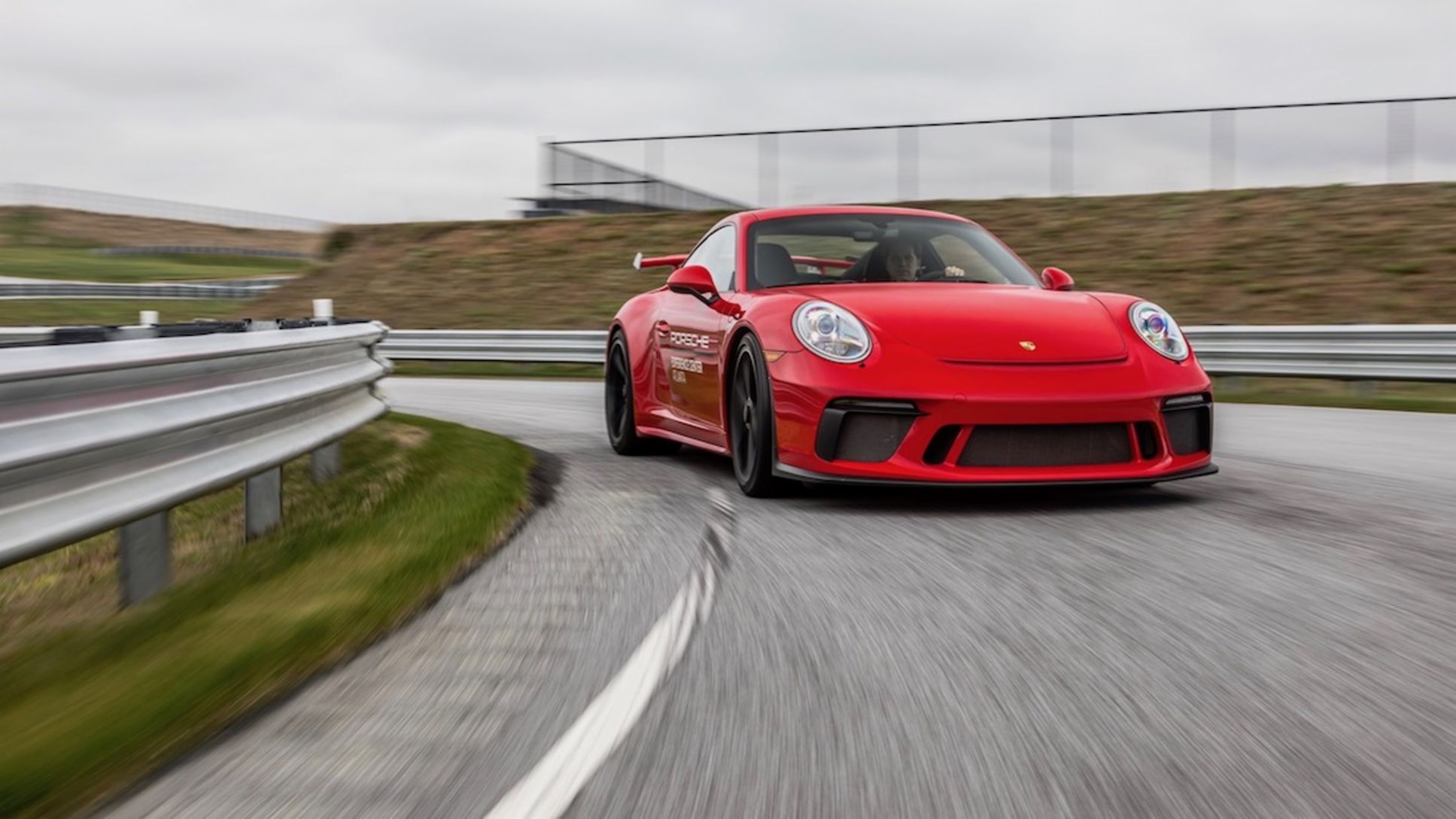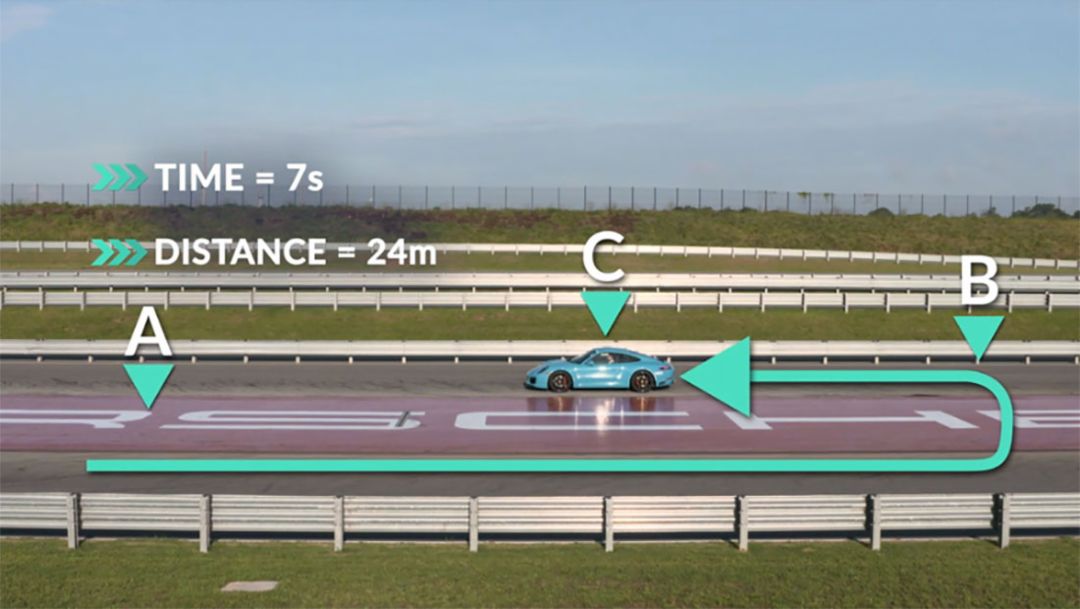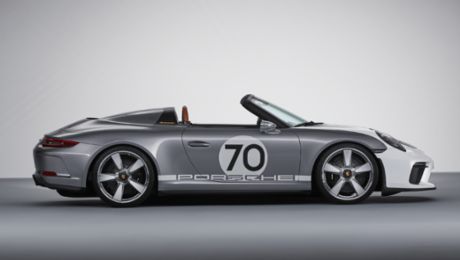How do you explain the difference between speed and acceleration to American schoolchildren learning physics? Surely there can be no better way than with the help of a 911, the Porsche sports car icon. This is why we invited Georgia Public Broadcasting over to our Porsche Experience Center in Atlanta to film two video tutorials with them: one on “Speed and acceleration” and the other on “Acceleration and kinematic equations”. They are both intended as part of a much longer series comprising several teaching units for all middle schools and high schools in the US state of Georgia. They all feature the 911 driving around One Porsche Drive to demonstrate the different ways of calculating movement in kinematics.
For the past 55 years, the 911 has been the centrepiece of the Porsche brand. It is also one of the most successful sports cars in the world, with over one million units having already been built. Many of the innovations brought to life for the first time in the Porsche 911 stem from the race course. This means it is firmly rooted in its commitment to Porsche’s principle of performance; and now it has already made it through to the seventh generation of production. The 911 stands for the thrill of speed and acceleration, making it the perfect object of study for eager physics students.
The fact that the sports car manufacturer is supporting the production company by granting it permission to film on the premises of the Porsche Experience Center using a 911 is a point of honour. For many years now, our company has been championing education & science as one of the five main causes it is dedicated to advancing. Whether it is on Girls’ Day, or by awarding research grants or cooperating with universities, Porsche is well aware of its responsibility as a company and actively promotes young people through a whole host of projects and cooperative initiatives.
Consumption data
911 GT3: Fuel consumption combined 12.9 l/100 km; CO2 emissions 290 g/km
Model Range 911 (Typ 991): Fuel consumption combined 13.3 – 12.7 l/100 km; CO2 emissions 308 – 296 g/km





